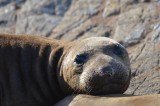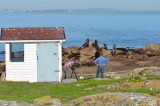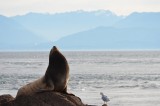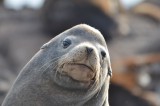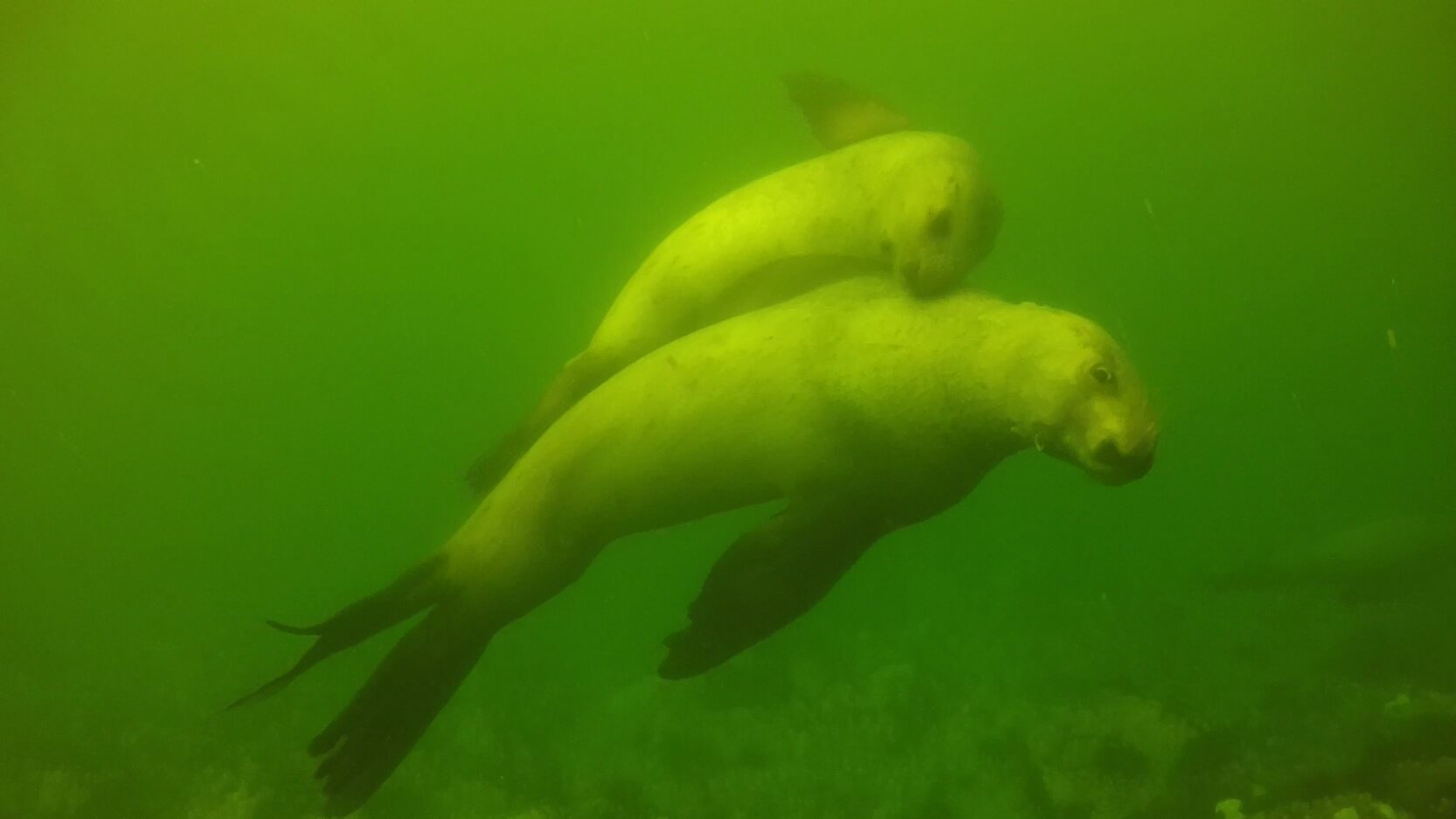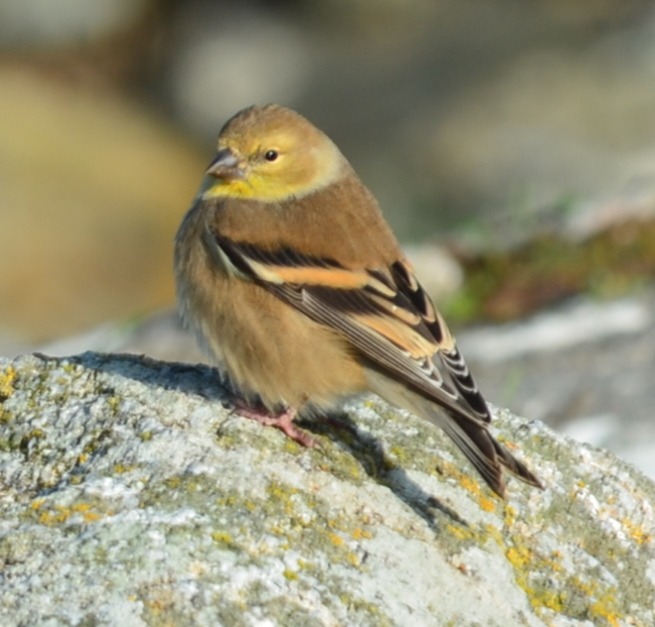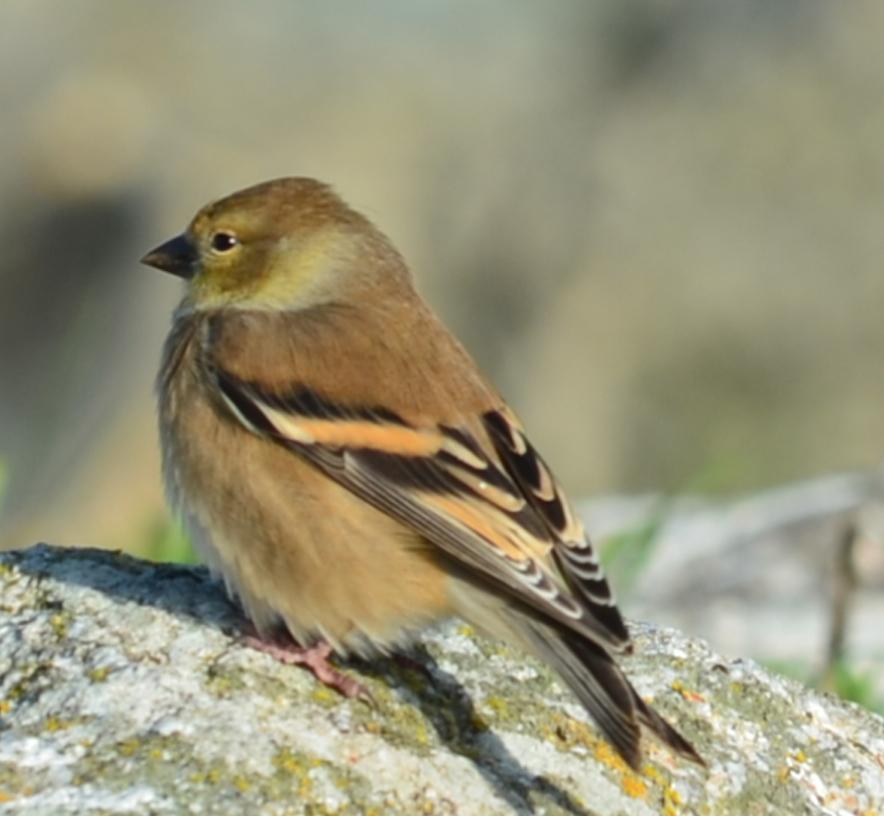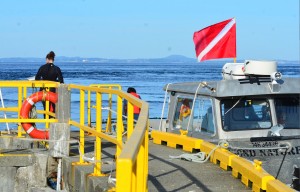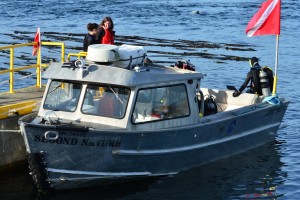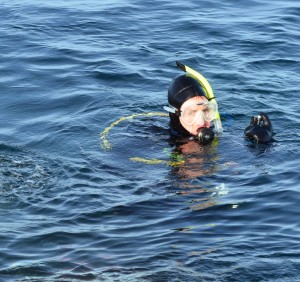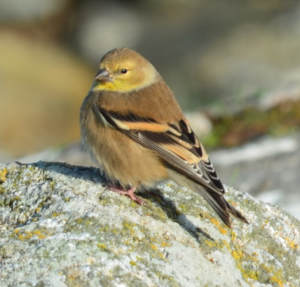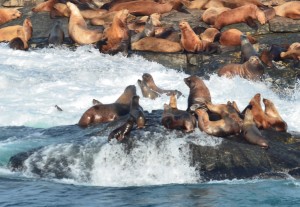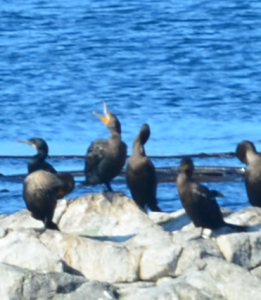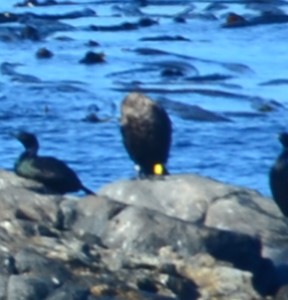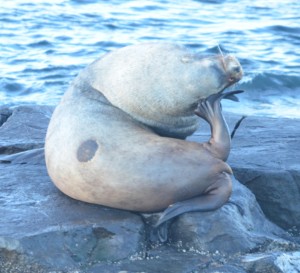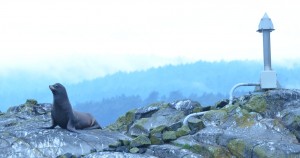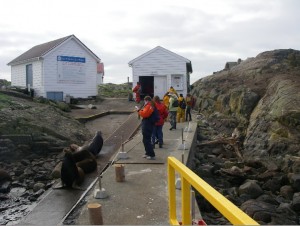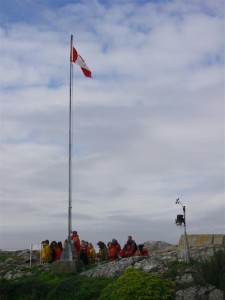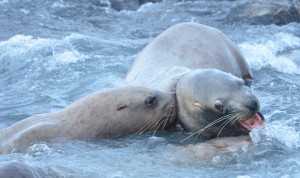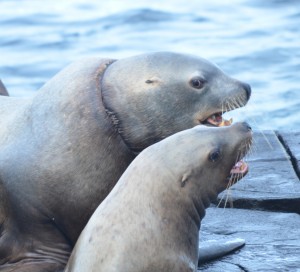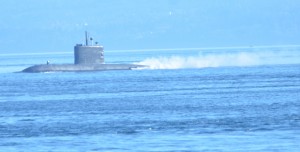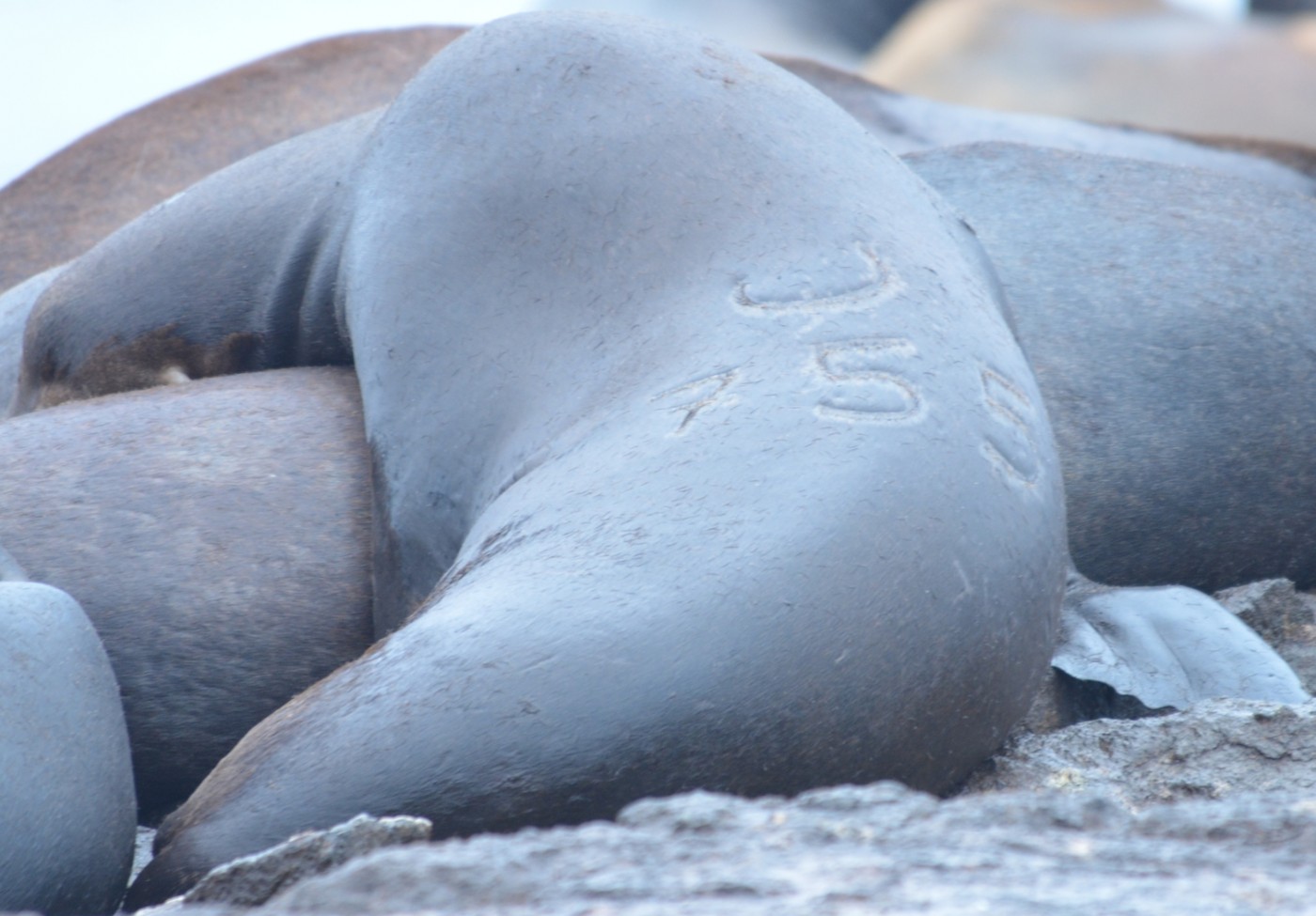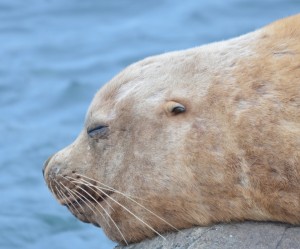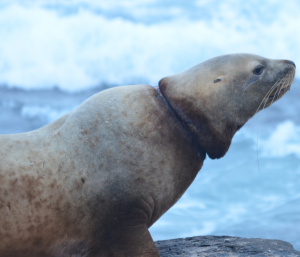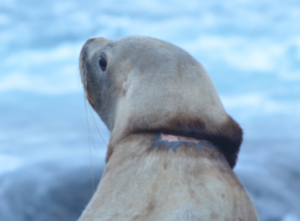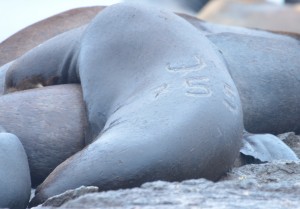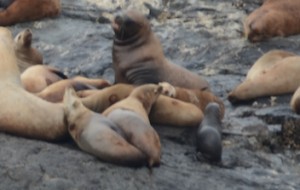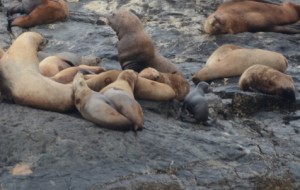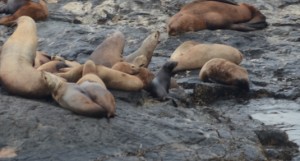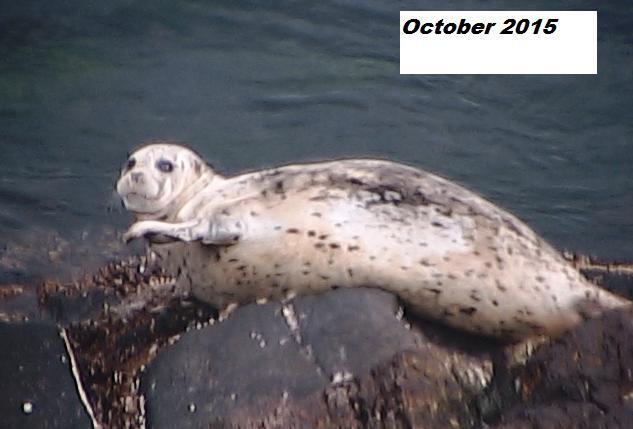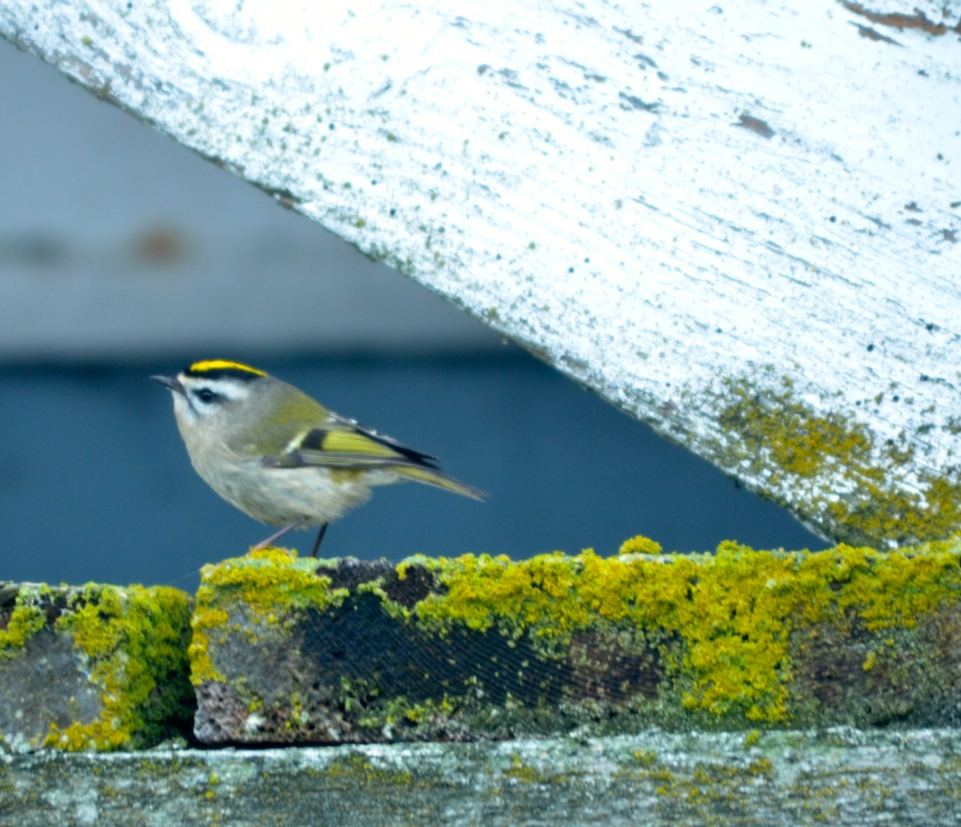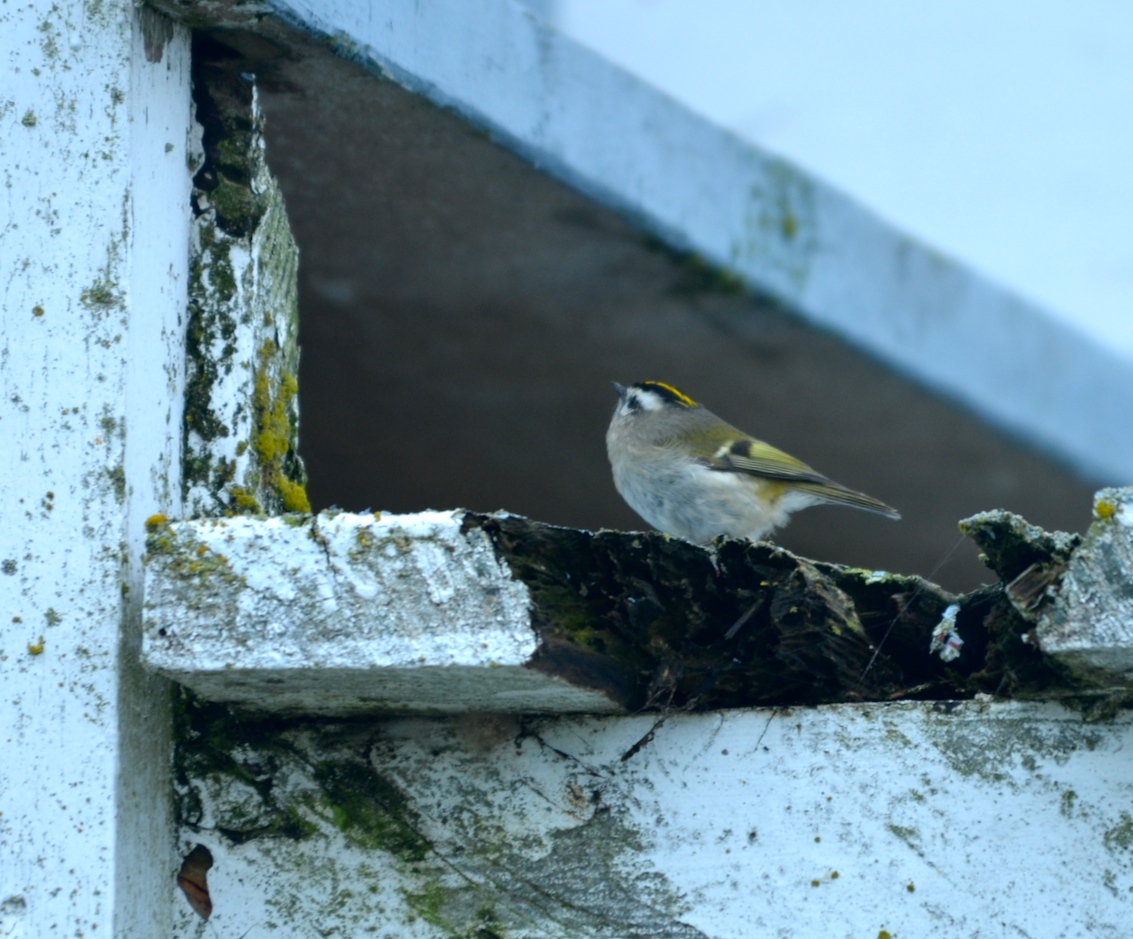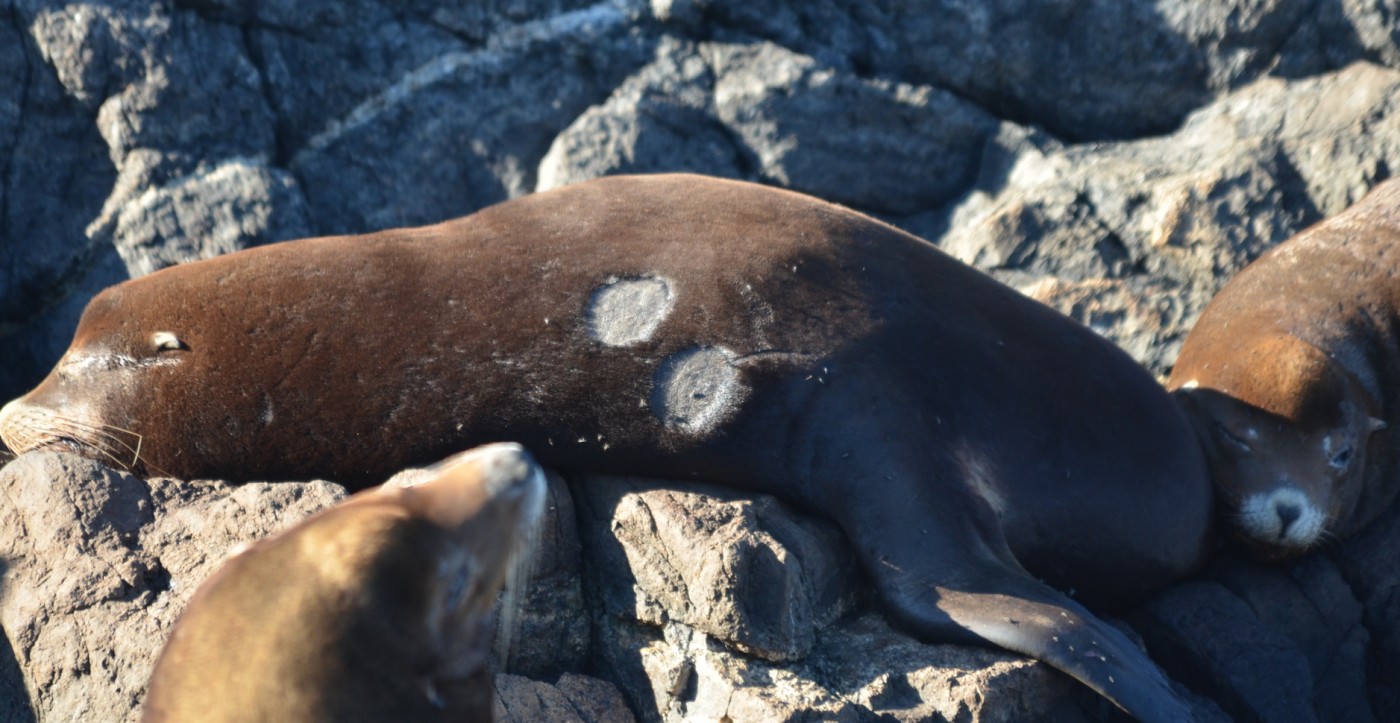Friday started with fog again and light southeast winds, from 5 to 10 knots. By late morning there were glimmers of clearing and by mid-day the sun was shining. The wind stayed calm and it stayed fairly clear, with clouds rolling by as the wind turned to west, in the late afternoon. By evening it was still and the sky mostly clear but that must have changed as the was fresh rainwater in the morning. The barometer bottomed out Friday morning at 1007 hPA before rising briefly. It started to drop again mid-day falling until mid-Saturday. The gale warning for Saturday, came true after another very foggy morning and light easterly winds. The turn to westerly was rapid, the fog was blown off and ominous clouds with a black line on the water to the west, foretold of what was to come. It blew up fast, reaching 40 knots and then settled back down to the up and down of 20 – 35 knots. There is gale warning is still in effect and the wind is forecast to lighten overnight, then become easterly 5 to 15 near noon Sunday. (I am collecting rainwater for laundry, bonus.)
Only two whale watching vessels were observed in the protected area Friday. Two sports fishing vessels also passed through. Saturday was a little busier with five whale watching vessels noted in reserve but there were no pleasure craft, they were probably seeking shelter. It is quite possible that I missed traffic both days due to thick fog reducing visibility.
Thursday was too foggy to do the animal census so it is cobbled together from the brief time slots when visibility permitted on Friday. It is interesting to note that the gull population plummeted after the arrival of the first Bald Eagle to be seen here, since I arrived at the end of August. Not sure if that is coincidental or not.
I only noticed the eagle because of the hundreds and hundreds of gulls moving en masse, from North Rock over to Great Race. When I peeked through the spotting scope, all the cormorants were in the water, the gulls were gone and there sat an adult Bald Eagle. Only the Harbour Seals seemed to ignore its presence.
There was no sign of the eagle today and the gull numbers are perhaps even lower. Glaucous-winged juveniles and adults continue to mill around summer territories. Some young ones are still practising picking things up, flying up and dropping them. Most of the adults are fully into their alternate plumage now. Their faces recovering from the physical aspects of feeding young.
The sea lions are spending more time in the water now that their favourite haul-out spots are worse than pig pens. Some of them have turned to rock climbing and I saw the first scouts up on the heli-pad today.
Animal Census
Steller Sea Lion 317
California Sea Lion 428
Harbour Seal 156
Northern Elephant Seal 6
Sea Otter 1
Southern Resident Killer Whale ( observed within one mile of ER during count week, (Race Passage, east, west and south of RR)
Biggs Killer Whale (Transients) ( during count week Race Passage & southwest)
Humpback Whale 2 (1 observed within ER west side during count week)
Minke Whale 1 ( observed within one mile of ER during count week just east of North Rock)
Canada Goose 4
Harlequin Duck 7
Surf Scoters 73 (flying through to east)
Double-crested Cormorant 35
Brandt’s Cormorants 29
Pelagic Cormorant 9
Bald Eagle 1 adult
Black Oystercatcher 23
Black Turnstone 6
Kildeer 2
Glaucous-winged Gull 258
California Gull 41
Thayer’s Gulls 874
Herring Gull 0
Ring-billed Gull 0
Western Gull 2
Heerman’s Gull 20
Mew Gull 18
Unidentified gulls 361
Total gull count 1574
Common Raven 2
Savannah Sparrow 19
Fox Sparrow 1
Junco 1
Golden-crown Kinglet 1
American Pipet 1
Starting the countdown on my last week on the rock for this shift. I may be back for a bit at the end of October, if extra training is needed for the new folks.

